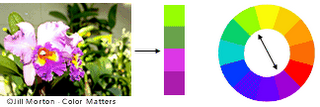Welcome to Kik's Art Journal
Hi this is Kik's journal all about arts, but my first project is about Colour Wheels and I will be giving you some information about it
Primary Colours

Red, yellow and blue
In traditional color theory, these are the 3 pigment colors that can not be mixed or formed by any combination of other colors.
Secondary Colours

Green, orange and purple. These are the colors formed by mixing the primary colors.
Tertiary Colours

Yellow-orange, red-orange, red-purple, blue-purple, blue-green and yellow-green.
These are the colors formed by mixing a primary and a secondary color. That's why the hue is a two word name, such as blue-green, red-violet, and yellow-orange.


